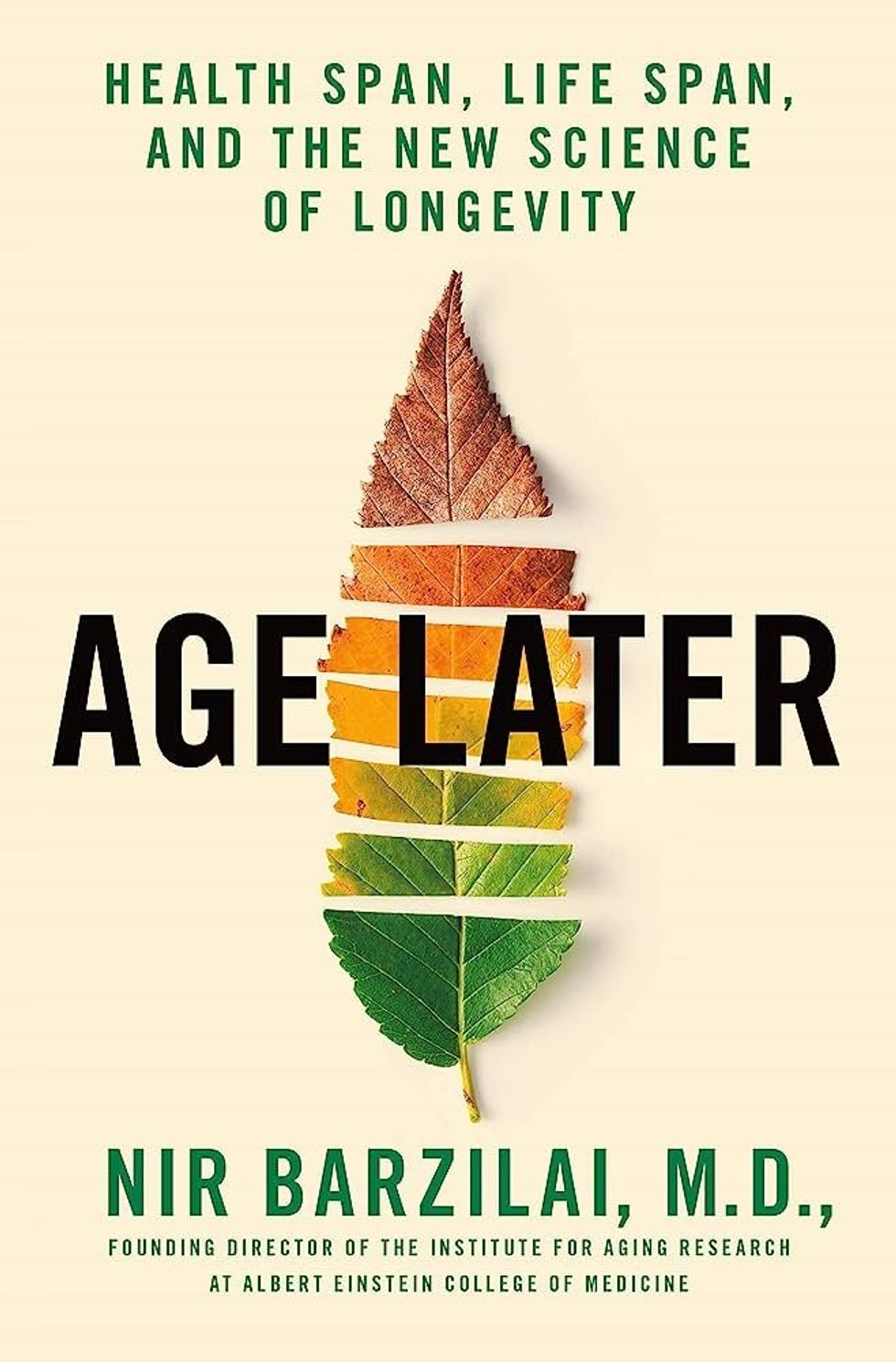I’m a Black, Genderqueer Medical Student: Here’s My Hard-Won Wisdom for Students and Educational Institutions

Advice follows for how to improve higher education for marginalized communities.
This article is part of the magazine, "The Future of Science In America: The Election Issue," co-published by LeapsMag, the Aspen Institute Science & Society Program, and GOOD.
In the last 12 years, I have earned degrees from Harvard College and Duke University and trained in an M.D.-Ph.D. program at the University of Pennsylvania. Through this process, I have assembled much educational privilege and can now speak with the authority that is conferred in these ivory towers. Along the way, as a Black, genderqueer, first-generation, low-income trainee, the systems of oppression that permeate American society—racism, transphobia, and classism, among others—coalesced in the microcosm of academia into a unique set of challenges that I had to navigate. I would like to share some of the lessons I have learned over the years in the format of advice for both Black, Indigenous, and other People of Color (BIPOC) and LGBTQ+ trainees as well as members of the education institutions that seek to serve them.
To BIPOC and LGBTQ+ Trainees: Who you are is an asset, not an obstacle. Throughout my undergraduate years, I viewed my background as something to overcome. I had to overcome the instances of implicit bias and overt discrimination I experienced in my classes and among my peers. I had to overcome the preconceived, racialized, limitations on my abilities that academic advisors projected onto me as they characterized my course load as too ambitious or declared me unfit for medical school. I had to overcome the lack of social capital that comes with being from a low-resourced rural community and learn all the idiosyncrasies of academia from how to write professional emails to how and when to solicit feedback. I viewed my Blackness, queerness, and transness as inconveniences of identity that made my life harder.
It was only as I went on to graduate and medical school that I saw how much strength comes from who I am. My perspective allows me to conduct insightful, high-impact, and creative research that speaks to uplifting my various intersecting communities. My work on health equity for transgender people of color (TPOC) and BIPOC trainees in medicine is my form of advocacy. My publications are love letters to my communities, telling them that I see them and that I am with them. They are also indictments of the systems that oppress them and evidence that supports policy innovations and help move our society toward a more equitable future.
To Educators and Institutions: Allyship is active and uncomfortable. In the last 20 years, institutions have professed interest in diversifying their members and supporting marginalized groups. However, despite these proclamations, most have fallen short of truly allying themselves to communities in need of support. People often assume that allyship is defined by intent; that they are allies to Black people in the #BLM era because they, too, believe that Black lives have value. This is decency, not allyship. In the wake of the tragic killings of Breonna Taylor and George Floyd, and the ongoing racial inequity of the COVID-19 pandemic, every person of color that I know in academia has been invited to a townhall on racism. These meetings risk re-traumatizing Black people if they feel coerced into sharing their experiences with racism in front of their white colleagues. This is exploitation, not allyship. These discussions must be carefully designed to prioritize Black voices but not depend on them. They must rely on shared responsibility for strategizing systemic change that centers the needs of Black and marginalized voices while diffusing the requisite labor across the entire institution.
Allyship requires a commitment to actions, not ideas. In education this is fostering safe environments for BIPOC and LGBTQ+ students. It is changing the culture of your institution such that anti-racism is a shared value and that work to establish anti-racist practices is distributed across all groups rather than just an additional tax on minority students and faculty. It is providing dedicated spaces for BIPOC and LGBTQ+ students where they can build community amongst themselves away from the gaze of majority white, heterosexual, and cisgender groups that dominate other spaces. It is also building the infrastructure to educate all members of your institution on issues facing BIPOC and LGBTQ+ students rather than relying on members of those communities to educate others through divulging their personal experiences.
Among well-intentioned ally hopefuls, anxiety can be a major barrier to action. Anxiety around the possibility of making a mistake, saying the wrong thing, hurting or offending someone, and having uncomfortable conversations. I'm here to alleviate any uncertainty around that: You will likely make mistakes, you may receive backlash, you will undoubtedly have uncomfortable conversations, and you may have to apologize. Steel yourself to that possibility and view it as an asset. People give their most unfiltered feedback when they have been hurt, so take that as an opportunity to guide change within your organizations and your own practices. How you respond to criticism will determine your allyship status. People are more likely to forgive when a commitment to change is quickly and repeatedly demonstrated.
The first step to moving forward in an anti-racist framework is to compensate the students for their labor in making the institution more inclusive.
To BIPOC and LGBTQ+ Trainees: Your labor is worth compensation and recognition. It is difficult to see your institution failing to adequately support members of your community without feeling compelled to act. As a Black person in medicine I have served on nearly every committee related to diversity recruitment and admissions. As a queer person I have sat on many taskforces dedicated to improving trans education in medical curricula. I have spent countless hours improving the institutions at which I have been educated and will likely spend countless more. However, over the past few years, I have realized that those hours do not generally advance my academic and professional goals. My peers who do not share in my marginalized identities do not have the external pressure to sequester large parts of their time for institutional change. While I was drafting emails to administrators or preparing journal clubs to educate students on trans health, my peers were studying.
There were periods in my education where there were appreciable declines in my grades and research productivity because of the time I spent on institutional reform. Without care, this phenomenon can translate to a perceived achievement gap. It is not that BIPOC and LGBTQ+ achieve less; in fact, in many ways we achieve more. However, we expend much of our effort on activities that are not traditionally valued as accomplishments for career advancement. The only way to change this norm is to start demanding compensation for your labor and respectfully declining if it is not provided. Compensation can be monetary, but it can also be opportunities for professional identity formation. For uncompensated work that I feel particularly compelled to do, I strategize how it can benefit me before starting the project. Can I write it up for publication in a peer-reviewed scientific journal? Can I find an advisor to support the task force and write a letter of reference on my behalf? Can I use the project to apply for external research funding or scholarships? These are all ways of translating the work that matters to you into the currency that the medical establishment values as productivity.
To Educators and Institutions: Compensate marginalized members of your organizations for making it better. Racism is the oldest institution in America. It is built into the foundation of the country and rests in the very top office in our nation's capital. Analogues of racism, specifically gender-based discrimination, transphobia, and classism, have similarly seeped into the fabric of our country and education system. Given their ubiquity, how can we expect to combat these issues cheaply? Today, anti-racism work is in vogue in academia, and institutions have looked to their Black and otherwise marginalized students to provide ways that the institution can improve. We, as students, regularly respond with well-researched, scholarly, actionable lists of specific interventions that are the result of dozens (sometimes hundreds) of hours of unpaid labor. Then, administrators dissect these interventions and scale them back citing budgetary concerns or hiring limitations.
It gives the impression that they view racism as an easy issue to fix, that can be slotted in under an existing line item, rather than the severe problem requiring radical reform that it actually is. The first step to moving forward in an anti-racist framework is to compensate the students for their labor in making the institution more inclusive. Inclusion and equity improve the educational environment for all students, so in the same way one would pay a consultant for an audit that identifies weaknesses in your institution, you should pay your students who are investing countless hours in strategic planning. While financial compensation is usually preferable, institutions can endow specific equity-related student awards, fellowships, and research programs that allow the work that students are already doing to help further their careers. Next, it is important to invest. Add anti-racism and equity interventions as specific items in departmental and institutional budgets so that there is annual reserved capital dedicated to these improvements, part of which can include the aforementioned student compensation.
To BIPOC and LGBTQ+ Trainees: Seek and be mentors. Early in my training, I often lamented the lack of mentors who shared important identities with myself. I initially sought a Black, queer mentor in medicine who could open doors and guide me from undergrad pre-med to university professor. Unfortunately, given the composition of the U.S. academy, this was not a realistic goal. While our white, cisgender, heterosexual colleagues can identify mentors they reflect, we have to operate on a different mentorship model. In my experience, it is more effective to assemble a mentorship network: a group of allies who facilitate your professional and personal development across one or more arenas. For me, as a physician-scholar-advocate, I need professional mentors who support my specific research interests, help me develop as a policy innovator and advocate, and who can guide my overall career trajectory on the short- and long- term time scales.
Rather than expecting one mentor to fulfill all those roles, as well as be Black and queer, I instead seek a set of mentors that can share in these roles, all of whom are informed or educable on the unique needs of Black and queer trainees. When assembling your own mentorship network, remember personal mentors who can help you develop self-care strategies and achieve work-life balance. Also, there is much value in peer mentorship. Some of my best mentors are my contemporaries. Your experiences have allowed you to accumulate knowledge—share that knowledge with each other.
To Educators and Institutions: Hire better mentors. Be better mentors. Poor mentorship is a challenge throughout academia that is amplified for BIPOC and LGBTQ+ trainees. Part of this challenge is due to priorities established in the hiring process. Institutions need to update hiring practices to explicitly evaluate faculty and staff candidates for their ability to be good mentors, particularly to students from marginalized communities. This can be achieved by including diverse groups of students on hiring committees and allowing them to interview candidates and assess how the candidate will support student needs. Also, continually evaluate current faculty and staff based on standardized feedback from students that will allow you to identify and intervene on deficits and continually improve the quality of mentorship at your institution.
The suggestions I provided are about navigating medical education, as it exists now. I hope that incorporating these practices will allow institutions to better serve the BIPOC and LGBTQ+ trainees that help make their communities vibrant. I also hope that my fellow BIPOC and LGBTQ+ trainees can see themselves in this conversation and feel affirmed and equipped in navigating medicine based on the tools I provide here. However, my words are only a tempering measure. True justice in medical education and health will only happen when we overhaul our institutions and dismantle systems of oppression in our society.
[Editor's Note: To read other articles in this special magazine issue, visit the beautifully designed e-reader version.]
A startup aims to make medicines in space
A company is looking to improve medicines by making them in the nearly weightless environment of space.
Story by Big Think
On June 12, a SpaceX Falcon 9 rocket deployed 72 small satellites for customers — including the world’s first space factory.
The challenge: In 2019, pharma giant Merck revealed that an experiment on the International Space Station had shown how to make its blockbuster cancer drug Keytruda more stable. That meant it could now be administered via a shot rather than through an IV infusion.
The key to the discovery was the fact that particles behave differently when freed from the force of gravity — seeing how its drug crystalized in microgravity helped Merck figure out how to tweak its manufacturing process on Earth to produce the more stable version.
Microgravity research could potentially lead to many more discoveries like this one, or even the development of brand-new drugs, but ISS astronauts only have so much time for commercial experiments.
“There are many high-performance products that are only possible to make in zero-gravity, which is a manufacturing capability that cannot be replicated in any factory on Earth.”-- Will Bruey.
The only options for accessing microgravity (or free fall) outside of orbit, meanwhile, are parabolic airplane flights and drop towers, and those are only useful for experiments that require less than a minute in microgravity — Merck’s ISS experiment took 18 days.
The idea: In 2021, California startup Varda Space Industries announced its intention to build the world’s first space factory, to manufacture not only pharmaceuticals but other products that could benefit from being made in microgravity, such as semiconductors and fiber optic cables.
This factory would consist of a commercial satellite platform attached to two Varda-made modules. One module would contain equipment capable of autonomously manufacturing a product. The other would be a reentry capsule to bring the finished goods back to Earth.
“There are many high-performance products that are only possible to make in zero-gravity, which is a manufacturing capability that cannot be replicated in any factory on Earth,” said CEO Will Bruey, who’d previously developed and flown spacecraft for SpaceX.
“We have a team stacked with aerospace talent in the prime of their careers, focused on getting working hardware to orbit as quickly as possible,” he continued.
“[Pharmaceuticals] are the most valuable chemicals per unit mass. And they also have a large market on Earth.” -- Will Bruey, CEO of Varda Space.
What’s new? At the time, Varda said it planned to launch its first space factory in 2023, and, in what feels like a first for a space startup, it has actually hit that ambitious launch schedule.
“We have ACQUISITION OF SIGNAL,” the startup tweeted soon after the Falcon 9 launch on June 12. “The world’s first space factory’s solar panels have found the sun and it’s beginning to de-tumble.”
During the satellite’s first week in space, Varda will focus on testing its systems to make sure everything works as hoped. The second week will be dedicated to heating and cooling the old HIV-AIDS drug ritonavir repeatedly to study how its particles crystalize in microgravity.
After about a month in space, Varda will attempt to bring its first space factory back to Earth, sending it through the atmosphere at hypersonic speeds and then using a parachute system to safely land at the Department of Defense’s Utah Test and Training Range.
Looking ahead: Ultimately, Varda’s space factories could end up serving dual purposes as manufacturing facilities and hypersonic testbeds — the Air Force has already awarded the startup a contract to use its next reentry capsule to test hardware for hypersonic missiles.
But as for manufacturing other types of goods, Varda plans to stick with drugs for now.
“[Pharmaceuticals] are the most valuable chemicals per unit mass,” Bruey told CNN. “And they also have a large market on Earth.”
“You’re not going to see Varda do anything other than pharmaceuticals for the next minimum of six, seven years,” added Delian Asparouhov, Varda’s co-founder and president.
This article originally appeared on Big Think, home of the brightest minds and biggest ideas of all time.

Genes that protect health with Dr. Nir Barzilai
Centenarians essentially won the genetic lottery, says Nir Barzilai of Albert Einstein College of Medicine. He is studying their genes to see how the rest of us can benefit from understanding how they work.
In today’s podcast episode, I talk with Nir Barzilai, a geroscientist, which means he studies the biology of aging. Barzilai directs the Institute for Aging Research at the Albert Einstein College of Medicine.
My first question for Dr. Barzilai was: why do we age? And is there anything to be done about it? His answers were encouraging. We can’t live forever, but we have some control over the process, as he argues in his book, Age Later.
Dr. Barzilai told me that centenarians differ from the rest of us because they have unique gene mutations that help them stay healthy longer. For most of us, the words “gene mutations” spell trouble - we associate these words with cancer or neurodegenerative diseases, but apparently not all mutations are bad.
Listen on Apple | Listen on Spotify | Listen on Stitcher | Listen on Amazon | Listen on Google
Centenarians may have essentially won the genetic lottery, but that doesn’t mean the rest of us are predestined to have a specific lifespan and health span, or the amount of time spent living productively and enjoyably. “Aging is a mother of all diseases,” Dr. Barzilai told me. And as a disease, it can be targeted by therapeutics. Dr. Barzilai’s team is already running clinical trials on such therapeutics — and the results are promising.
More about Dr. Barzilai: He is scientific director of AFAR, American Federation for Aging Research. As part of his work, Dr. Barzilai studies families of centenarians and their genetics to learn how the rest of us can learn and benefit from their super-aging. He also organizing a clinical trial to test a specific drug that may slow aging.
Show Links
Age Later: Health Span, Life Span, and the New Science of Longevity https://www.amazon.com/Age-Later-Healthiest-Sharpest-Centenarians/dp/1250230853
American Federation for Aging Research https://www.afar.org
https://www.afar.org/nir-barzilai
https://www.einsteinmed.edu/faculty/484/nir-barzilai/
Metformin as a Tool to Target Aging
https://www.ncbi.nlm.nih.gov/pmc/articles/PMC5943638/
Benefits of Metformin in Attenuating the Hallmarks of Aging https://www.ncbi.nlm.nih.gov/pmc/articles/PMC7347426/
The Longevity Genes Project https://www.einsteinmed.edu/centers/aging/longevity-genes-project/
Lina Zeldovich has written about science, medicine and technology for Popular Science, Smithsonian, National Geographic, Scientific American, Reader’s Digest, the New York Times and other major national and international publications. A Columbia J-School alumna, she has won several awards for her stories, including the ASJA Crisis Coverage Award for Covid reporting, and has been a contributing editor at Nautilus Magazine. In 2021, Zeldovich released her first book, The Other Dark Matter, published by the University of Chicago Press, about the science and business of turning waste into wealth and health. You can find her on http://linazeldovich.com/ and @linazeldovich.


